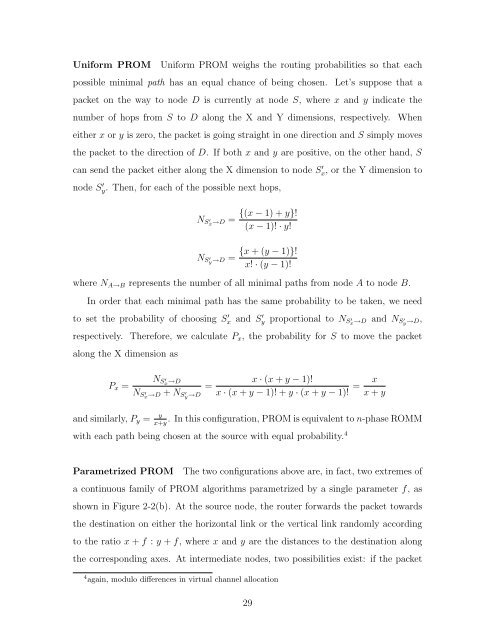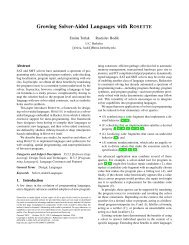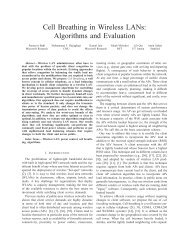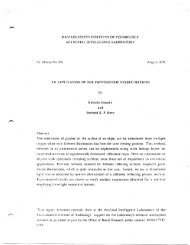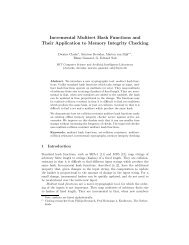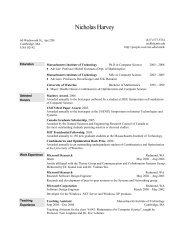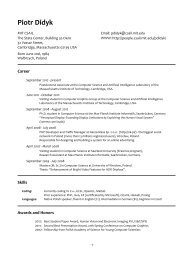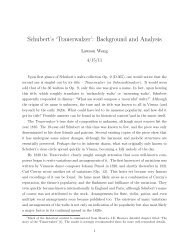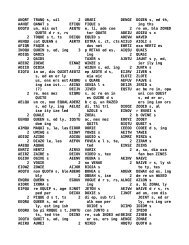On-chip Networks for Manycore Architecture Myong ... - People - MIT
On-chip Networks for Manycore Architecture Myong ... - People - MIT
On-chip Networks for Manycore Architecture Myong ... - People - MIT
Create successful ePaper yourself
Turn your PDF publications into a flip-book with our unique Google optimized e-Paper software.
Uni<strong>for</strong>m PROM<br />
Uni<strong>for</strong>m PROM weighs the routing probabilities so that each<br />
possible minimal path has an equal chance of being chosen.<br />
Let’s suppose that a<br />
packet on the way to node D is currently at node S, where x and y indicate the<br />
number of hops from S to D along the X and Y dimensions, respectively.<br />
When<br />
either x or y is zero, the packet is going straight in one direction and S simply moves<br />
the packet to the direction of D. If both x and y are positive, on the other hand, S<br />
can send the packet either along the X dimension to node S 0 x, or the Y dimension to<br />
node S 0 y. Then, <strong>for</strong> each of the possible next hops,<br />
N S 0 x !D = {(x 1) + y}!<br />
(x 1)! · y!<br />
N S 0 y !D =<br />
{x +(y 1)}!<br />
x! · (y 1)!<br />
where N A!B represents the number of all minimal paths from node A to node B.<br />
In order that each minimal path has the same probability to be taken, we need<br />
to set the probability of choosing Sx 0 and Sy 0 proportional to N S 0 x !D and N S 0 y !D,<br />
respectively. There<strong>for</strong>e, we calculate P x , the probability <strong>for</strong> S to move the packet<br />
along the X dimension as<br />
P x =<br />
N S 0 x !D<br />
N S 0 x !D + N S 0 y !D<br />
=<br />
x · (x + y 1)!<br />
x · (x + y 1)! + y · (x + y 1)! = x<br />
x + y<br />
and similarly, P y =<br />
y . In this configuration, PROM is equivalent to n-phase ROMM<br />
x+y<br />
with each path being chosen at the source with equal probability. 4<br />
Parametrized PROM The two configurations above are, in fact, two extremes of<br />
a continuous family of PROM algorithms parametrized by a single parameter f, as<br />
shown in Figure 2-2(b). At the source node, the router <strong>for</strong>wards the packet towards<br />
the destination on either the horizontal link or the vertical link randomly according<br />
to the ratio x + f : y + f, where x and y are the distances to the destination along<br />
the corresponding axes. At intermediate nodes, two possibilities exist: if the packet<br />
4 again, modulo di↵erences in virtual channel allocation<br />
29


